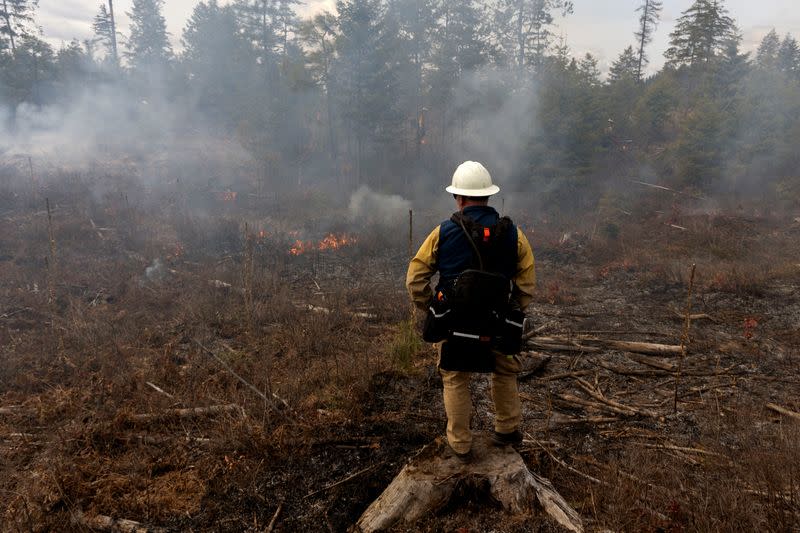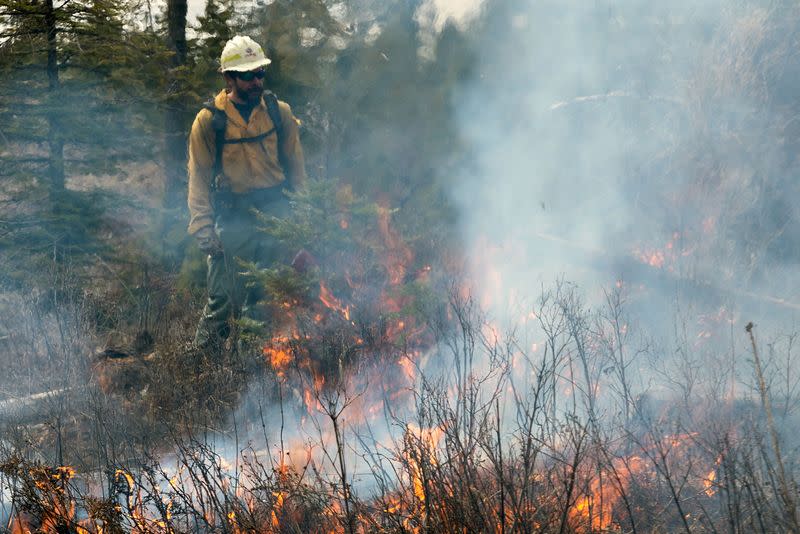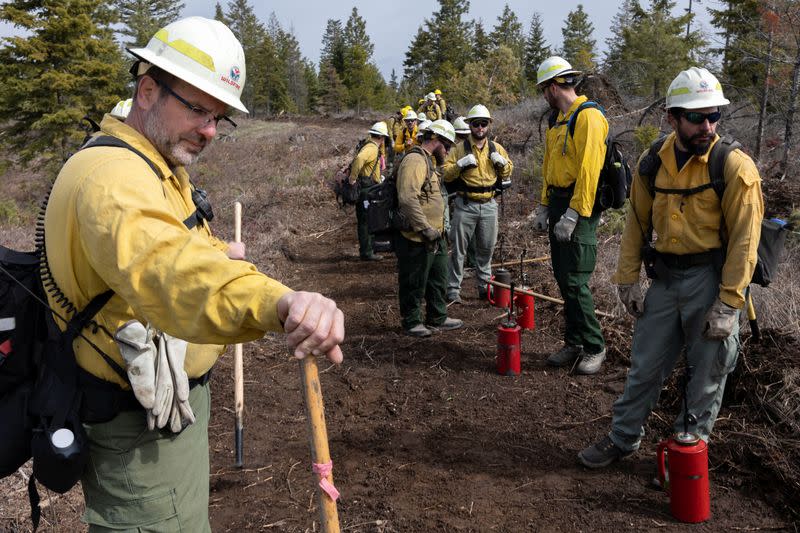U.S. West Coast races to reduce wildfire risk ahead of summer
By Matt McKnight
(Reuters) - As wildfire season approaches, U.S. officials along the West Coast are working hard to mitigate risks with prescribed burns, while a widespread educational campaign is underway to create buffers around fire-prone homes.
In Washington state, Department of Natural Resources Commissioner Hillary Franz is working on reversing negative perceptions surrounding prescribed fires.
"Prescribed fire isn't bad and isn't dangerous. We actually need more of it on the landscape and we need to be bringing fire in under our terms and at the right times," she said.
Approximately 30 miles north of Spokane, officials have been taking action. In mid-April, a crew comprised of approximately 50 wildland firefighters gathered to burn dry wood and debris on the ground, which can help further fuel wildfires.
The test fires were lit ahead of a full prescribed burn. It wasn't long before Andrew Stenbeck, the East Uplands District Manager for the Northeast Region of Washington State Department of Natural Resources, paused the crew's efforts and made a phone call to DNR's meteorologist back in Olympia.
Moments later the prescribed fire was cancelled, due to incoming rain and high humidity conditions.
"It's a frustrating emotional roller coaster," said Stenbeck, standing on top of Bogg's Pit, the DNR-owned land that has been the focus of a prescribed burn since late last year.
"You'll have days when you're absolutely certain things are going well and then something changes," said Stenbeck, whose team will try to resume prescription burning in the weeks ahead.
The season generally runs from June through September though in some areas the wildfires have begun earlier. In California last year, there were 7,490 wildfires, with 362,455 acres burned, nine fatalities, and of the 876 structures affected, 104 were damaged, according to Cal Fire .
During a recent visit to California's state capital region in Sacramento, U.S. fire administrator Dr. Lori Moore-Merrell outlined the need for fire agencies to continue informing the public about protecting their homes.
"It's important that people make sure there is space between their vegetated fuel and their homes ... once we have a wildfire, embers move quickly. And if it's a wind driven wildfire, then it will ignite," Moore-Merrell told Reuters.
"It's important that we have that defensible space where we can stop the fire before it reaches your home," she said.
The wildland-urban interface is defined by the United States Department of Agriculture as the area where houses meet or intermingle with undeveloped wildland vegetation.
"Too often our communities think ... once fire's at the door, there's nothing they can do and they're running for their lives and trying to save their homes and their families," Franz said. "But the fact is, people can be taking steps right now ... to make sure their homes and their neighborhoods are more resilient to fire."
(Reporting by Matt M. McKnight; Editing by Diane Craft)



